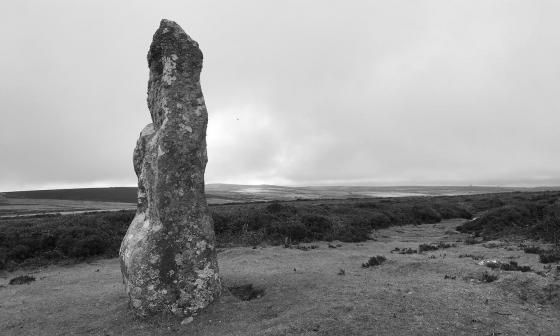
We didn’t go to look for the Giant’s Grave, but we did come across this interesting slab propped up next to the entrance of Merthyr Farm, Morvah. It has a central basin, which might suggest an intention to use it in a press or as a millstone.

We didn’t go to look for the Giant’s Grave, but we did come across this interesting slab propped up next to the entrance of Merthyr Farm, Morvah. It has a central basin, which might suggest an intention to use it in a press or as a millstone.
As late as 1889 the members of a Cornish antiquarian society went down a lane east of Morvah church. To the west of this lane was a stone of about a ton weight. They were told this was the Giant’s Grave by tradition, and the ’ “old people” used to hear voices from beneath it.’ They were also told it marked the pit-fall made of an old mine-adit by Jack [the giant-killer, that is], and how when the giant came storming down the hill and fell in they piled stones on him and crushed him. If one walked three times round the stone and threw stones at it, even now one might still hear him roar.... It was this ‘happy event’ – the giant’s death – siad the guide, that was commemorated by Morvah Feast.
It would be better to read the original, in the Penzance Natural History and Antiquarian Society volume for 1888-9, but this is from B C Spooner’s summary in Folklore v76 (spring 1965), ‘The Giants of Cornwall’.











































































































































































